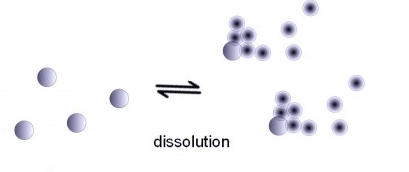Procedure: spICP-MS for analysis of ENM dissolution over time
University of Birmingham utilises a PerkinElmer NexION 300D spICP-MS instrument. The protocol described here has been applied to assess the dissolution of ENMs in a range of environmental media and matrices, including following uptake into organisms
 |
|
Mechanisms & Methods |
Used for |
|
In many previous dissolution studies, e.g. using ICP-MS, it was necessary to separate the intact ENMs from the dissolved ions at each timepoint, using for example, filtration or centrifugation. These processes can lead to loss of material or influence the dissolution kinetics, leading to artefacts. Typically, both the total metal and the dissolved fraction were measured separately. When spICP-MS is applied, no separation step is needed, and a single measurement on each sample quantifies the amount of particles, their sizes / size distribution, and the amount of ions in the background, increasing the accuracy of the results. For each ENM type, it is essential to include relevant ENM controls to assess the transport efficiency of the instrument, and to include elemental standards to build the calibration curve. Typically, calibration of the NexION 300D is performed using NIST ICP-MS standards at several concentrations, e.g. 1, 2, and 3 parts per billion (1 ppb is equivalent to 1 mg/L), and 2 sizes of ENMs of equivalent composition. |
|
Contact
 Benjamin Fryer
Benjamin Fryer
 Iseult Lynch
Iseult Lynch
Email: i.lynch@bham.ac.uk

